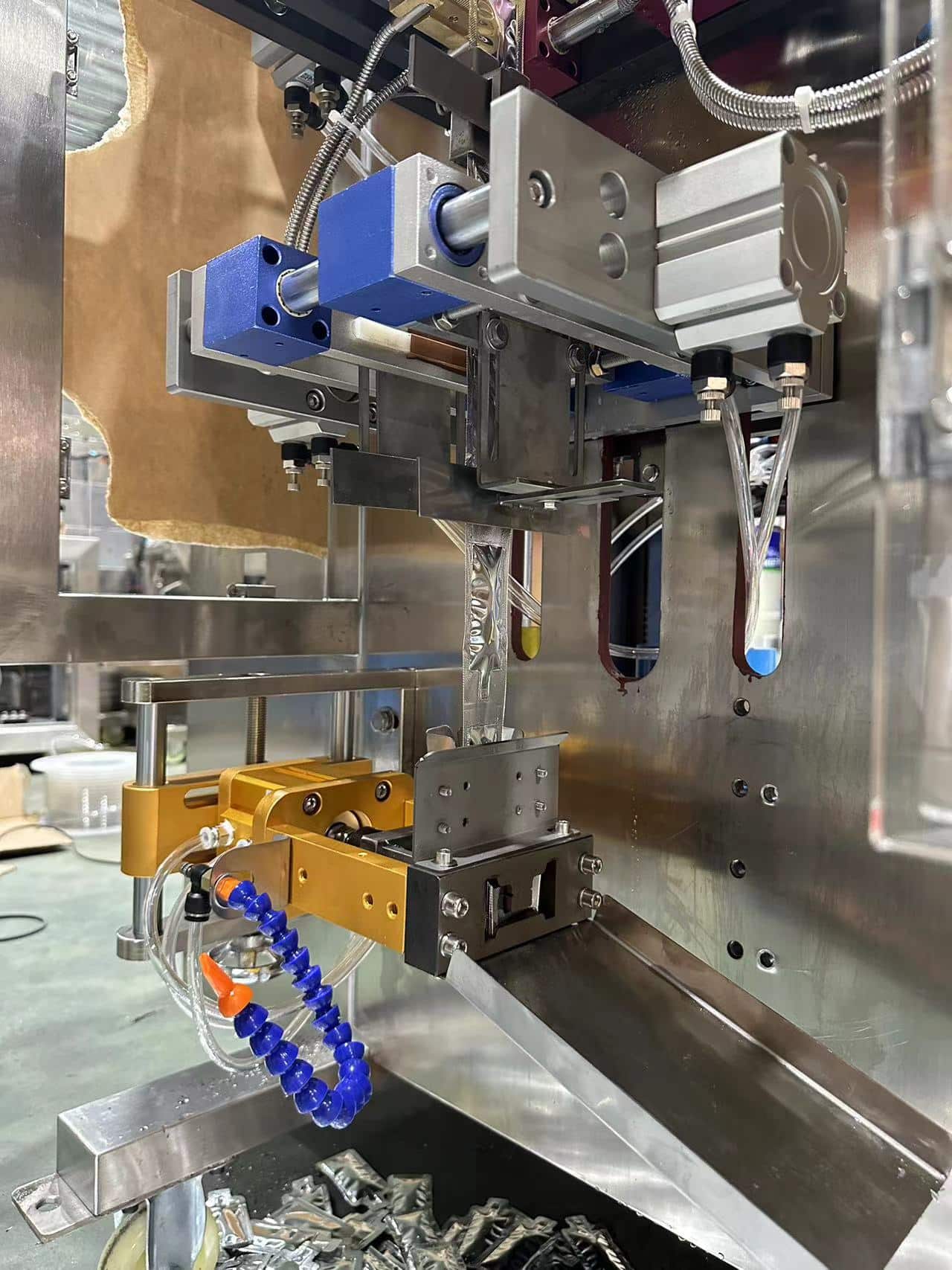Introduction
Proper maintenance of pouch packing machines is essential to ensure their longevity and optimal performance. These machines are crucial in the packaging industry, handling everything from small snack packs to large commodity bags.
Over time, neglect or improper maintenance can lead to decreased efficiency, increased downtime, and higher operational costs. This comprehensive guide outlines essential maintenance practices designed specifically for machines à emballer les sachets, helping operators prevent common mechanical issues, extend equipment lifespan, and maintain consistent production quality.

Understanding Pouch Packing Machines
Pouch packing machines are indispensable in various industries for their ability to package products securely and efficiently. Key components include:
- Sealing Mechanisms: Ensures the pouch is closed properly, preserving the product’s integrity.
- Filling Systems: Accurately measures and dispenses the product into each pouch.
- Material Handling Conveyors: Manage the movement of pouches through the machine.
Due to the complexity of these systems, maintenance should be tailored to their specific industrial applications. Regular checks and servicing of these critical components are necessary to avoid disruptions in automated processes.
Establishing a Routine Maintenance Schedule
A well-structured maintenance schedule is vital for keeping machines à emballer les sachets at peak efficiency. Maintenance tasks should be divided into:
Daily Maintenance
- Inspect seals and sensors for wear or malfunction.
- Ensure all moving parts are lubricated.
- Check for any obstructions in the product and bag loading areas.
Weekly Maintenance
- Perform thorough cleaning of both food contact and non-contact surfaces to maintain hygiene and performance.
- Verify the proper operation of the printer, sealing bar, and other vital components.
Monthly Maintenance
- Focus on mechanical alignment and assess wear on various machine parts.
- Review and replace high-wear components as necessary.
- Utilize a logbook or digital tracking system to record these activities, helping to monitor the machine’s health over time and predict when parts might need repair or replacement.
Dépannage des problèmes courants
Despite regular maintenance, issues may arise with machines à emballer les sachets. Common problems include:
Inconsistent Sealing
- Causes: Worn-out seals, incorrect temperature, or pressure settings.
- Solutions: Inspect and replace seals, adjust temperature and pressure settings.
Misalignment During Packaging
- Causes: Misaligned components, improper bag loading.
- Solutions: Realign components, ensure correct bag loading procedures.
Unexpected Machine Downtime
- Causes: Sensor errors, mechanical failures.
- Solutions: Check sensor settings, inspect mechanical components for wear or damage, replace worn parts promptly.
Implementing preventive measures, such as periodic checks and maintaining a stock of critical spare parts, can help minimize downtime and maintain production efficiency.
Optimizing Machine Performance Through Calibration
Regular calibration ensures that machines à emballer les sachets operate with high accuracy and efficiency. Key practices include:
- Regular Calibration: Adjust settings to account for environmental factors like temperature and humidity.
- Certified Technicians: Use professionals and up-to-date calibration tools to ensure precise operation.
- Amélioration de la qualité des produits: Regular calibration reduces waste and enhances product quality.
Enhancing Longevity with Replacement Parts and Upgrades
Using high-quality replacement parts, particularly those from the original equipment manufacturer (OEM), is crucial for maintaining the longevity and efficiency of machines à emballer les sachets. Key points include:
- OEM Parts: Designed to fit precisely and function optimally with your equipment.
- Upgrading Machines: Enhancing older machines can increase efficiency and adapt them to new materials or pouch formats, offering substantial long-term savings in maintenance costs and improved operational efficiency.
Training Personnel for Effective Machine Handling
Proper training for operators and maintenance personnel is essential to maximize the efficiency of machines à emballer les sachets. Training should cover:
- Operation and Emergency Response: Basic troubleshooting and emergency procedures.
- Regular Retraining: Ensures skills remain current.
- Certifications: May be required to confirm personnel competence.
Incorporating Technological Advances
Technological advancements, such as the Internet of Things (IoT) and machine learning, are revolutionizing maintenance practices. Benefits include:
- Predictive Maintenance: Anticipates machine failures before they occur, reducing downtime and maintenance costs.
- Enhanced Reliability: Advanced technologies improve machine reliability and long-term savings.
Conclusion
Regular maintenance is essential for the longevity and efficient operation of machines à emballer les sachets. Establishing thorough maintenance routines, ensuring proper calibration, utilizing high-quality replacement parts, and incorporating technological advances can significantly enhance operational efficiency and machine reliability. Continuous training ensures personnel are always prepared to handle the machines optimally. By investing in robust maintenance and training measures, you can achieve improved performance, reduced downtime, and better overall productivity from your machines à emballer les sachets.
FAQs on Pouch Packing Machine Maintenance
What is the importance of a routine maintenance schedule for pouch packing machines?
Establishing a routine maintenance schedule helps keep machines à emballer les sachets operating at optimal efficiency. By setting daily, weekly, and monthly maintenance tasks, potential issues can be caught early, reducing downtime and extending the machine’s life.
How can daily, weekly, and monthly maintenance tasks vary?
Daily maintenance involves inspecting critical components like seals and sensors. Weekly tasks include cleaning contact and non-contact surfaces to maintain hygiene and performance. Monthly reviews focus on mechanical alignment and checking for wear on different parts of the machine.
What are common issues with pouch packing machines and how can they be addressed?
Common issues include inconsistent sealing, misalignments, and unexpected stoppages. To tackle these, check sensor settings, inspect and replace worn components, and maintain a stock of critical spare parts to minimize downtime.
Why is calibration necessary for optimizing the performance of pouch packing machines?
Calibration ensures accurate filling, weighing, and sealing of pouches according to standards. Regular calibration helps maintain high accuracy and efficiency, improving product quality and reducing wastage.
What long-term benefits do high-quality replacement parts and technological upgrades offer for pouch packing machines?
Using high-quality replacement parts ensures components fit precisely and function appropriately, supporting machine longevity and efficiency. Technological upgrades can make machines more efficient and capable of handling new materials or different pouch formats, offering substantial long-term savings.
